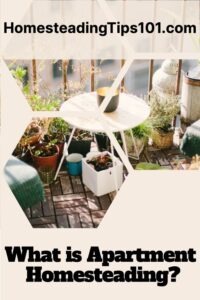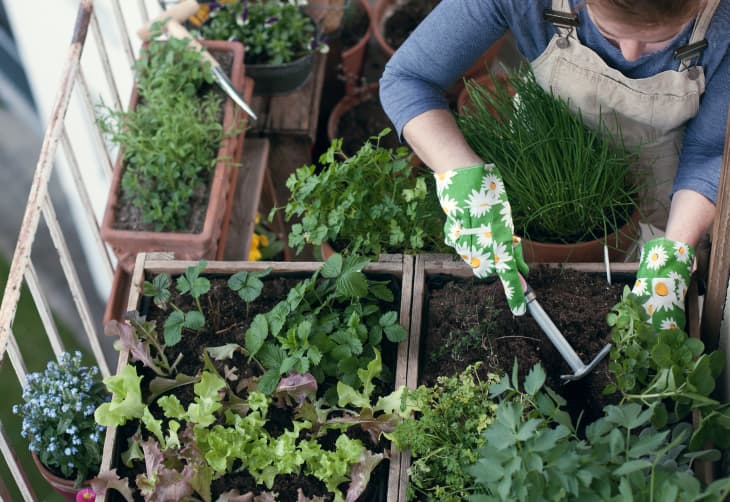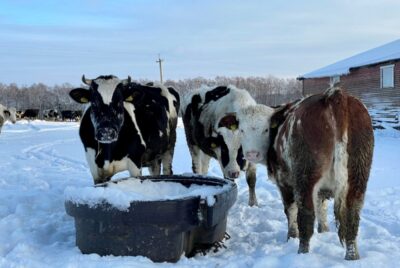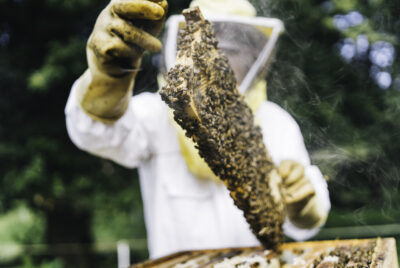What is Apartment Homesteading?
"We may earn a commission from purchases made using our links. Please see disclaimer."
Embrace Apartment Homesteading for Sustainable Living
Apartment Homesteading, the art of self-sufficiency in a small living space, has gained popularity in recent years. As urbanization continues to rise, many individuals are seeking ways to live a more sustainable lifestyle, even within the confines of their apartments. In this article, we will explore the concept of Apartment Homesteading, its benefits, and how you can get started on your own sustainable journey.
The Rise of Apartment Homesteading
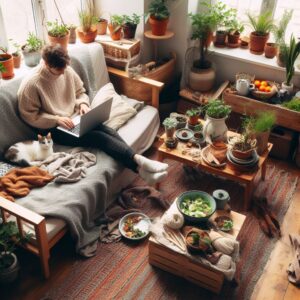 Apartment Homesteading has emerged out of a broader term referred to as urban homesteading as a response to the desire for a more sustainable and self-sufficient lifestyle. As people become more aware of the environmental impact of their actions, they are looking for ways to reduce their carbon footprint and make a positive change. Homesteading, traditionally associated with rural living, has been adapted to suit urban dwellers through Apartment Homesteading.
Apartment Homesteading has emerged out of a broader term referred to as urban homesteading as a response to the desire for a more sustainable and self-sufficient lifestyle. As people become more aware of the environmental impact of their actions, they are looking for ways to reduce their carbon footprint and make a positive change. Homesteading, traditionally associated with rural living, has been adapted to suit urban dwellers through Apartment Homesteading.
The COVID-19 pandemic has also accelerated interest in apartment homesteading, as people spend more time at home and look for productive hobbies. The ability to grow your own food provides a sense of security. Additionally, homesteading allows city dwellers to connect more with nature while living in an urban setting.
I. Benefits of Apartment Homesteading
Sustainable Living in a Small Space
One of the primary benefits of Apartment Homesteading is the ability to live sustainably in a limited area. By growing your own food and utilizing resources efficiently, you can reduce your reliance on large-scale agricultural practices and minimize transportation emissions associated with food distribution. Apartment Homesteading allows you to have a direct impact on reducing your environmental footprint.
Urban homesteading means you don’t need acres of rural land to live sustainably. With some clever planning, any apartment dweller can reduce waste, consume less, and shrink their carbon footprint.
Creating a Mini Urban Farm
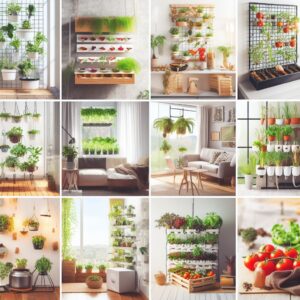 Apartment Homesteading enables you to transform your living space into a mini urban farm. Utilizing containers, vertical gardening, and hydroponics, you can grow a wide variety of fruits, vegetables, and herbs. With careful planning and efficient use of space, even the smallest balcony can become a flourishing garden. Even NASA has developed a new way of vertical farming to take advantage of small spaces.
Apartment Homesteading enables you to transform your living space into a mini urban farm. Utilizing containers, vertical gardening, and hydroponics, you can grow a wide variety of fruits, vegetables, and herbs. With careful planning and efficient use of space, even the smallest balcony can become a flourishing garden. Even NASA has developed a new way of vertical farming to take advantage of small spaces.
Urban farmscapes allow city dwellers to connect with nature and see the origins of their food. Homegrown produce boasts superior freshness and flavor compared to store-bought options. Plus, tending an urban farm provides a therapeutic hobby to relieve stress.
Reducing Environmental Footprint
Apartment Homesteading provides an opportunity to adopt sustainable practices such as composting, rainwater harvesting, and using organic fertilizers. By implementing these practices, you can reduce waste, conserve water, and minimize the use of chemical products, thus contributing to a healthier environment.
Every individual’s actions can have a cumulative effect. By making earth-friendly choices, urban homesteaders help protect ecosystems, wildlife, and natural resources.
Saving Money on Grocery Bills
Another appealing aspect of Apartment Homesteading is the potential to save money on grocery bills. By growing your own produce and herbs, you can significantly reduce your grocery expenses. Additionally, preserving surplus harvest through canning, freezing, or drying ensures a year-round supply of homegrown food, further decreasing your reliance on store-bought items.
Urban farming allows you to eat farm-fresh produce without paying farmer’s market prices. You can be sure your food is free of toxic pesticides that are commonly used in large-scale agriculture as well.
II. Getting Started with Apartment Homesteading
Assessing Your Space and Resources
 Before diving into Apartment Homesteading, it’s essential to assess the available space and resources in your apartment. Take stock of your balcony, windowsills, or any other areas where you can create a garden. Consider the amount of sunlight and airflow in these spaces as well. Additionally, evaluate your available resources such as time, budget, and access to tools or supplies.
Before diving into Apartment Homesteading, it’s essential to assess the available space and resources in your apartment. Take stock of your balcony, windowsills, or any other areas where you can create a garden. Consider the amount of sunlight and airflow in these spaces as well. Additionally, evaluate your available resources such as time, budget, and access to tools or supplies.
Careful planning is crucial, so sketch out potential garden layouts and draft a budget for supplies. Consult with experienced urban homesteaders to learn which plants thrive in your climate and lighting conditions.
Choosing the Right Plants and Animals
Once you have assessed your space, choose plants and animals that are suitable for apartment living. Opt for compact and dwarf varieties of plants that thrive in containers or vertical gardens. Herbs like basil, mint, and rosemary are excellent choices for indoor cultivation. If you’re interested in raising animals, consider small-scale options like dwarf rabbits, quails, or guinea pigs that can be comfortably housed in your apartment.
When selecting plants, focus on quick-growing vegetables and calorie-dense root crops to maximize productivity. For apartment animals, ensure potential pets are allowed under your rental lease terms.
Setting Up Container Gardens
 Container gardening is a popular method for apartment homesteaders. Choose pots or containers with proper drainage and ensure they are large enough to accommodate the root systems of your plants. Use nutrient-rich soil and organic fertilizers to support healthy growth. Plant a variety of vegetables, herbs, and even fruit trees in containers to maximize your harvest in limited space.
Container gardening is a popular method for apartment homesteaders. Choose pots or containers with proper drainage and ensure they are large enough to accommodate the root systems of your plants. Use nutrient-rich soil and organic fertilizers to support healthy growth. Plant a variety of vegetables, herbs, and even fruit trees in containers to maximize your harvest in limited space.
Use wheeled planters to easily move plants for optimal sunlight. Add compost or worm castings to the potting mix for added nutrients. Strategically place taller plants beside vining crops to maximize vertical growing space.
Caring for Indoor Plants
In addition to container gardens, indoor plants can bring life and freshness to your apartment. Research the specific care requirements of different houseplants and choose varieties that thrive indoors. Ensure they receive adequate sunlight or invest in grow lights if necessary. Regularly water, fertilize, and monitor the humidity levels to keep your indoor plants healthy and vibrant.
Group plants with similar light and watering needs to streamline care. Mist leaves regularly to increase humidity. Rotate plants each week so all sides receive equal light exposure.
Raising Small Livestock in Apartments
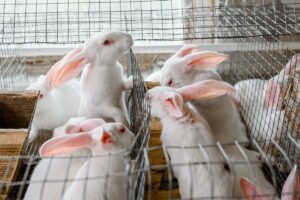
If you’re interested in taking apartment homesteading to the next level, consider raising small livestock. Animals like chickens or ducks may not be suitable for apartments, but smaller options like quails or rabbits can be housed in spacious cages. Provide them with proper food, water, and shelter, and ensure their living area is clean and odor-free.
Be sure to thoroughly research any livestock’s specific care needs before bringing them home. Give pets adequate enrichment items to prevent boredom and stress in a small habitat.
III. Essential Skills for Apartment Homesteading
Organic Gardening Techniques
Embracing organic gardening techniques is crucial for apartment homesteaders. Avoid the use of synthetic pesticides or herbicides and opt for natural pest control methods. Incorporate companion planting and crop rotation to promote a healthy ecosystem within your garden. Implementing organic practices ensures that you grow nutritious, chemical-free produce.
Learn to make DIY organic pesticides using ingredients like neem oil or pepper. Introduce beneficial insects like ladybugs or praying mantises to naturally control pests.
Composting in Limited Spaces
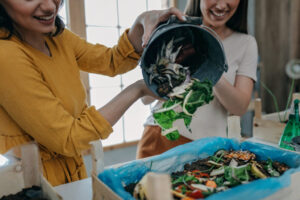
Composting is a key aspect of sustainable living. Even in an apartment setting, you can compost kitchen scraps using vermicomposting or composting bins designed for small spaces. This allows you to reduce waste and create nutrient-rich compost for your plants.
**Opt for odor-free composting methods like bokashi fermentation. Place compost bins on balconies or patios to prevent smell issues indoors. **
Indoor Pest Control
Dealing with pests in an apartment can be challenging. Implement preventive measures such as regularly inspecting your plants for pests and practicing good hygiene. Use natural pest deterrents like neem oil or homemade insecticidal soaps to control infestations. Introduce beneficial insects like ladybugs or lacewings to combat pests naturally.
Seal any cracks or crevices that may allow pests to enter. Maintain cleanliness and promptly address any standing water issues to deter pests.
Food Preservation Methods
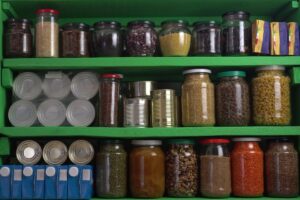 To make the most of your harvest, learn various food preservation methods. Canning, freezing, Vacuum Sealing, and drying are effective techniques for extending the shelf life of fruits, vegetables, and herbs. By preserving surplus produce, you can enjoy the taste of your homegrown food throughout the year.
To make the most of your harvest, learn various food preservation methods. Canning, freezing, Vacuum Sealing, and drying are effective techniques for extending the shelf life of fruits, vegetables, and herbs. By preserving surplus produce, you can enjoy the taste of your homegrown food throughout the year.
Start with easy methods like freezing berries or herbs in ice cube trays.
Consult reputable resources to ensure proper technique when canning low-acid foods.
IV. Overcoming Challenges in Apartment Homesteading
Dealing with Space Limitations
Space limitations are a common challenge in apartment homesteading. However, there are creative solutions to maximize the use of available space. Utilize vertical gardening techniques like trellises, hanging baskets, or wall-mounted planters. Use tiered shelving units or repurpose furniture to create additional growing areas. Think outside the box to optimize every inch of your apartment.
Install hanging rails or racks on walls and ceilings to double your vertical growing space. Use mirrors and light colors to create the illusion of a larger area.
Maximizing Vertical Space
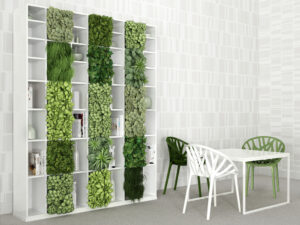 When space is limited, maximizing vertical space becomes essential. Install shelves or hanging planters on walls or ceilings to grow trailing or vining plants. Utilize trellises or vertical gardening systems to support climbing vegetables like tomatoes or cucumbers. By utilizing the vertical dimension, you can significantly increase your growing area.
When space is limited, maximizing vertical space becomes essential. Install shelves or hanging planters on walls or ceilings to grow trailing or vining plants. Utilize trellises or vertical gardening systems to support climbing vegetables like tomatoes or cucumbers. By utilizing the vertical dimension, you can significantly increase your growing area.
Try staggered shelves to accommodate plants of different heights. Use pallet collars around planter pots to elevate them off the floor.
Creative Storage Solutions
Apartment homesteading often requires storing gardening tools, supplies, and harvested produce in a limited space. Look for creative storage solutions such as utilizing under-bed storage containers, repurposing unused corners for shelving, or hanging storage organizers on the back of doors. Keeping your supplies organized and easily accessible will help you make the most of your apartment homesteading journey.
Opt for stackable storage bins to optimize vertical storage. Store tools in decorative buckets or baskets for easy access and visual appeal.
Noise and Odor Management
Living in close quarters with neighbors means being mindful of noise and odors associated with apartment homesteading. Be considerate of your neighbors when choosing animals or managing compost. Properly maintain your living areas to minimize unpleasant odors. Good communication and proactive measures will help maintain a harmonious living environment.
Place noisy appliances like fans on vibration-absorbing mats. Use baking soda or activated charcoal to absorb odors naturally and prevent issues.
Conclusion
Apartment Homesteading offers an exciting opportunity to embrace sustainable living even within the confines of a small space. By utilizing creative techniques such as container gardening, indoor plant care, and small-scale animal husbandry, you can enjoy the benefits of self-sufficiency, reduced environmental impact, and cost savings. Overcoming challenges such as space limitations and implementing essential skills like organic gardening and food preservation will contribute to your success as an apartment homesteader.
So, why wait? Start your apartment homesteading journey today and experience the joys of cultivating your own food, reducing your environmental footprint, and embracing a sustainable lifestyle.
FAQs (Frequently Asked Questions)
1. Can I practice apartment homesteading without access to an outdoor space?
Absolutely! Apartment homesteading can be done indoors using containers, windowsills, and vertical gardening techniques. You don’t necessarily need an outdoor space to get started.
2. Are there any restrictions on raising animals in apartments?
It’s essential to check your apartment building’s rules and regulations regarding raising animals. Some apartments may have restrictions on the type and size of animals allowed. Smaller animals like quails or rabbits are more suitable for apartment settings.
3. How much time does apartment homesteading require?
The time commitment for apartment homesteading varies depending on the scale of your activities and the number of plants or animals you have. Start small and gradually expand based on the time you can dedicate to your homesteading endeavors.
4. Can apartment homesteading save me money on groceries?
Yes, one of the benefits of apartment homesteading is the potential to save money on groceries. By growing your own produce and preserving the surplus harvest, you can reduce your dependency on store-bought items and lower your grocery bills.
5. How do I deal with pests in my apartment garden?
Implement preventive measures like regular inspections, using natural pest deterrents, and introducing beneficial insects. Maintaining good hygiene and practicing organic gardening methods will help keep pests under control.
If you are enjoying my article please show some Love and PIN this image on Pinterest!
